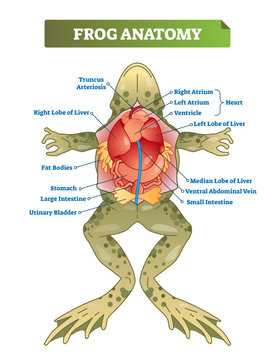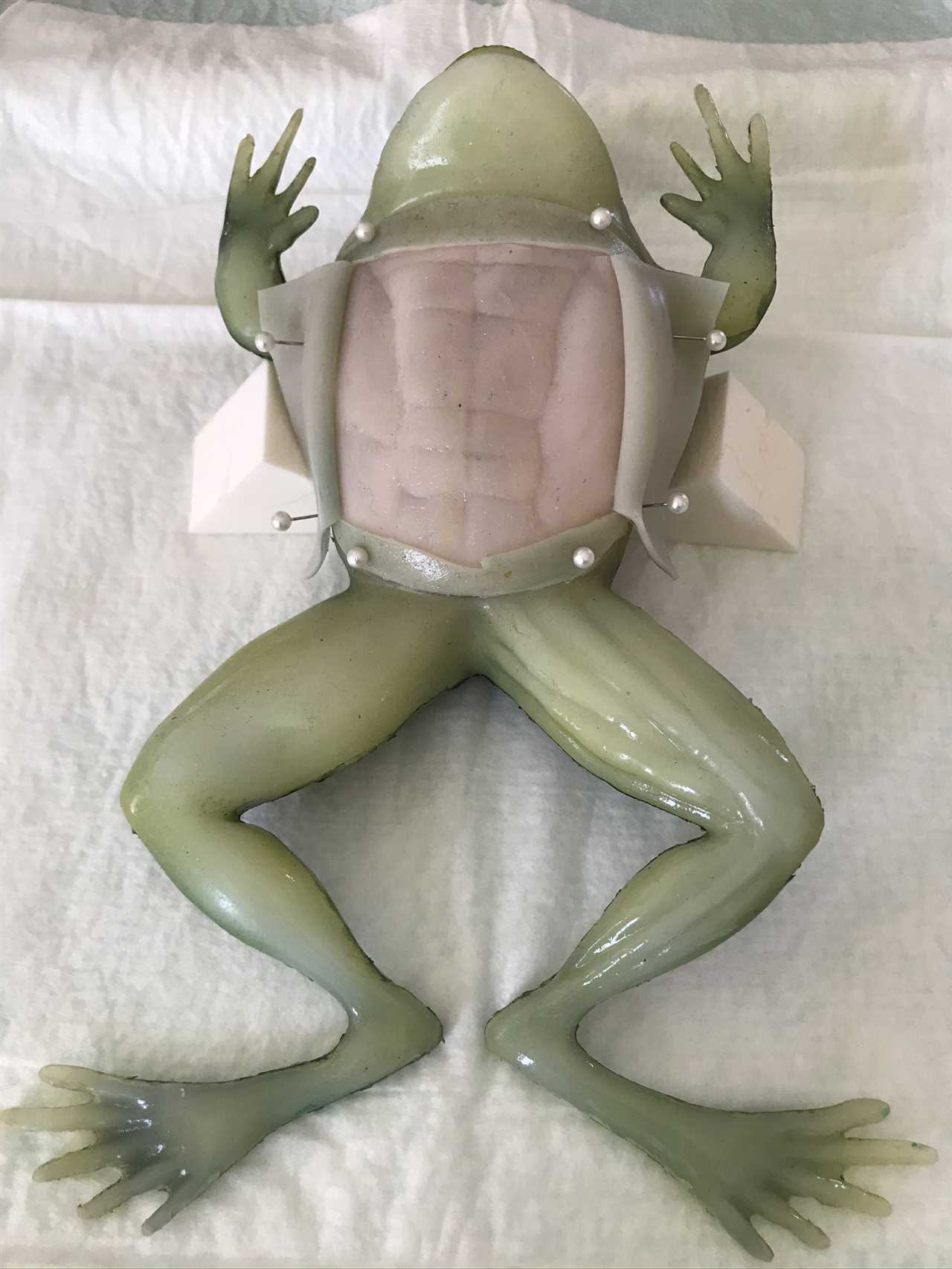
A frog can be dissected using a scalpel, carefully cutting through the skin and layers of muscle to reveal the intricate network of organs. Each specimen offers a unique opportunity to explore the inner workings of a frog’s body and learn about its anatomy.
During the dissection process, various organs can be observed and studied. The frog’s digestive system, for example, includes the stomach, liver, and intestines, which play a crucial role in the absorption and breakdown of nutrients. The circulatory system, consisting of the heart and blood vessels, is responsible for pumping blood and delivering oxygen and nutrients to the body’s cells.
By examining a dissected frog, you can also gain insight into its respiratory system, which involves the lungs and skin. Frogs have the ability to breathe through their skin, allowing them to absorb oxygen from the surrounding environment. Additionally, the skeletal system of a frog can be studied, highlighting the structure and function of bones and their role in providing support.
The Skeletal System
One of the essential systems to examine when dissecting a frog is the skeletal system. The skeletal system of a frog is composed of bones, cartilage, and connective tissues that provide support, protection, and facilitate movement.
Anatomical Features
When dissecting a frog, it becomes evident that the skeletal system is comprised of several key components. The frog’s skull, made up of several fused bones, protects the brain and sensory organs. The vertebrae, which form the backbone, provide support and allow for flexibility in movement.
The forelimbs and hindlimbs are essential skeletal structures that enable the frog to move and perform various actions. The forelimbs, consisting of the humerus, radius, and ulna bones, are responsible for actions involving the front limbs, such as grasping and climbing. The hindlimbs, including the femur, tibia, and fibula bones, allow for jumping and swimming.
Dissection and Examination

In the study of zoology, the dissection of a frog provides an opportunity to examine the internal organs and systems, including the skeletal system. To perform a frog dissection, a scalpel is used to make precise incisions, allowing access to the internal structures.
The Digestive System of a Frog

The digestive system of a frog is a fascinating area of study. It plays a vital role in the frog’s ability to obtain nutrients and energy for survival. The digestive system of a frog consists of several key organs, each with its own specific function.
| Organ | Function |
|---|---|
| Esophagus | Transports food from the mouth to the stomach |
| Stomach | Processes and breaks down food with the help of digestive enzymes |
| Small Intestine | Absorbs nutrients from the broken-down food into the bloodstream |
| Large Intestine | Helps in the reabsorption of water and formation of feces |
| Rectum | Stores feces before elimination |
| Anus | Eliminates waste from the body |
The Circulatory System
Another crucial component of the circulatory system is the blood vessels. Arteries carry oxygenated blood away from the heart and towards the body’s tissues. Veins, on the other hand, transport deoxygenated blood back to the heart. In a frog, there is a special blood vessel called the conus arteriosus, which helps regulate blood flow to the lungs.

I’m Lena Adams—a product of an unconventional upbringing in the African wilderness. My father, a daring explorer of African wildlife, sparked my fascination with reptiles, a passion that intertwined with the tragic loss of my mother during an expedition, leaving an indelible mark on my life. Driven to understand the creatures that captivated my parents, I embarked on my journey, sharing insights about reptiles, frogs, and lizards on my website. Through my explorations and conservation efforts, I honour my family’s legacy while seeking connections—to the creatures, nature, and the mother whose presence I yearn to understand.
